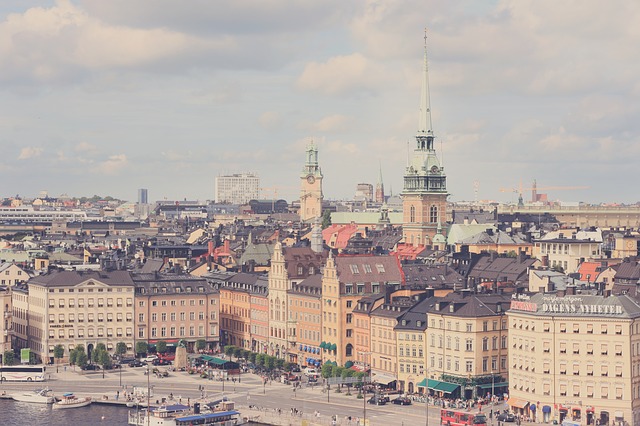- Target: Fossil free by 2050
- Status: In progress
- RES: District heating, renewable fuels in public transport, biogas, infrastructure for e-vehicles.
- Implementation: The City of Stockholm in Sweden is implementing policies across all sectors in order to reach the goal of zero CO2 emissions in the next 25 years.
The goal of becoming fossil fuel-free by 2050 was set in 2012. But by 2015, the city decided to push the target date up by 10 years, and now plans to run wholly on renewable energy by 2040. Its energy plan will rely on overall energy reduction and increase in renewable energy use. For instance, energy standards for new buildings built on city-owned land are to be 55 kWh/m2 compared with national standards of 80 kWh/m2. Similarly, the city aims to reduce energy use in the building sector by 50% between 1995 and 2050. By 2040, natural gas will be entirely phased out of the city’s energy grid and heating system, replaced primarily by biogas. The energy company that provides district heating has also decided to phase out fossil fuels by 2030. Increasing the use of renewable energy in transportation from 16% to 100% by 2040 will likely be the city’s most significant challenge, as this will entail removing all conventional fuel-powered vehicles from the city’s streets. To achieve this goal, the city plans to double the capacity of the public transport system, while improving walking and biking infrastructure. By removing all fossil fuel-burning cars from city streets by 2040, Stockholm expects to see reductions in air and noise pollution. Today, all inner city buses run on renewable fuels and all subways and commuter trains run on renewable electricity. All petrol sold in Stockholm contains 5% ethanol. Meanwhile, the City is working to increase the market share for biogas. It is also testing infrastructure for electric vehicles and plug-in hybrids. Building a fossil fuel-free city will create jobs within renewable fuel production, clean vehicles, technologies for building energy efficiency, and public transport infrastructure. Improving conditions for walking and biking will also be vital in achieving a 100% fossil fuel-free transport sector. These activities are bringing health benefits to Stockholm’s residents. Furthermore, 69% of households have access to district heating, and the share of renewable energy in district heating is nearly 70%. - Population: 960,031 city, 2,315,612 metro (2017)
- Area: 188 km2 (73 sq mi) city, 6,519 km2(2,517 sq mi) metro
- Link: https://international.stockholm.se/globalassets/rapporter/strategy-for-a-fossil-fuel-free-stockholm-by-2040.pdf

